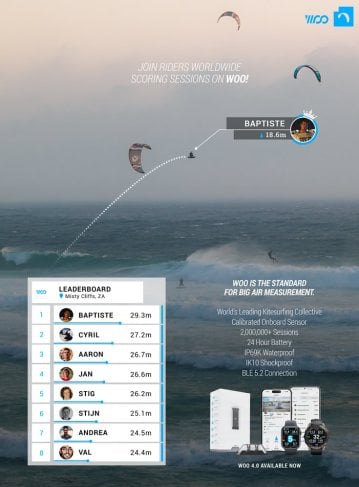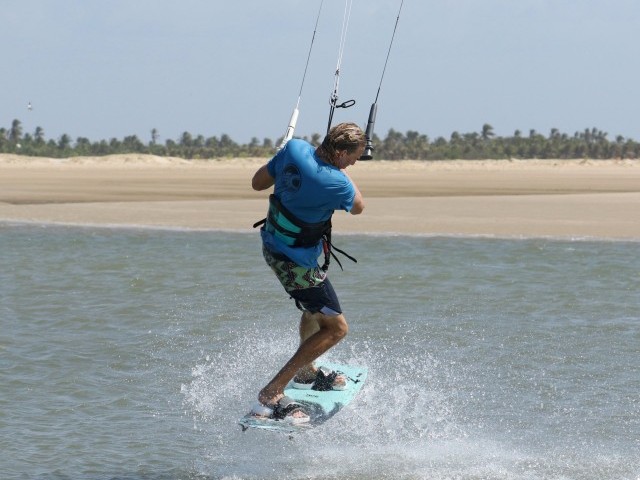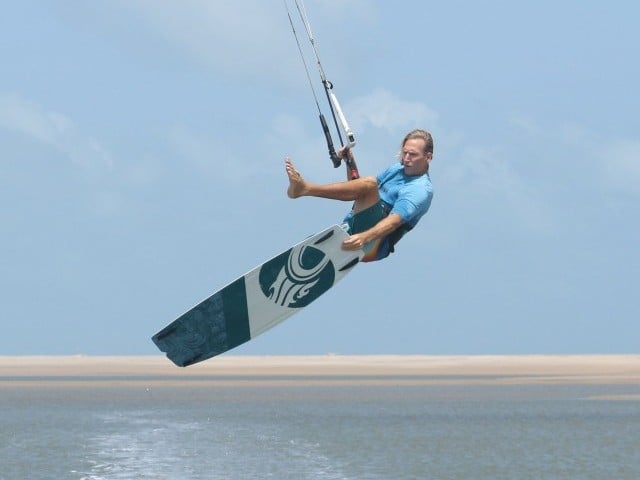
Tail Grab Board Off
Technique / Intermediate
Introduction
This one has been a long time coming. Back to the golden days, old school, or as a certain Toby likes to call it, Airstyle. Loosening your straps and boosting a board off is an acceptable and handsome add on to anybody’s box of tricks, or an alternative to bone crunching kite loops or changing down for some unhooked mayhem when it goes balistico. Plus all the non kite surfers on the beach will love it:)
We’re going to have a look at the tail grab version. Main reason for starting here is that it’s the one that requires the least flexibility, so even if you can’t touch your toes but can do a one foot, you’re ready. “Comme dab” let’s have a look at some of the key points.
The Jump
The way that you take off will have a huge effect on your success rate whilst learning the board off. To give yourself enough time to get the board off and then back on you’ve got two options, to boost huge, or go for elevated hang time. The second option will be easier as you’ll have the confidence to do it, whereas trying to emulate the greats such as Tobias, Koch and Shinn, boosting huge and travelling miles very quickly in the process is more likely to have you arching with fear than freeing your feet.
Your aim, as much as it hurts to admit, is to bow jump, regardless of your kite. If you go straight up it will require much less strength and fitness to get your board up in front of you. Sending the kite aggressively results in more of a ping off the water, and with your feet trailing behind you’ll need some impressive abs to get the board where you ant it quick enough. Here we can see that Christian has sent the kite, but his bar is angled gently back, so the kite won’t go much past 12 o’clock. Also as the kite pulls on the bar Christian has let it out a touch, so that he can then pull the bar in as the kite reaches 12. However the rest is the same as normal, a good solid edge to get the kite moving up and not across the window.
Knees Up & Kite Work
The take off enables the knees up to be relatively effortless, which is a good thing, as you also need to have control of the kite. Pulling on the bar to jump gets the kite under control and the bar in where you want it, so that you can concentrate on the job in hand. Having not sent the kite too far back the kite will be supporting you in a stable position from take off, and you won’t need to fly it forward until much later. With the kite high you will get maximum hang time even if you don’t get much height. Christian’s hand is butted right up against his chicken loop, holding the bar in. With no movement from the kite Christian can bring his knees up and look for the grab straight away.
Board Up and Off
Once you’ve got the grab, getting the board off your feet should be the easy bit… Grab the board wherever feels natural to you on the heelside edge and beware of sharp fins. Loosening your straps is a must, your feet need to slide out effortlessly and slide back in even more easily. That said don’t just crank them right open otherwise you may struggle to jump or loose the board on take off. Before slipping out lift your feet and rock your weight back in the harness to get the board up high, toes pointing up to the heavens. The higher you get the board the easier it will be to get your feet out, and the easier it will be to keep the board up for the return journey. With the board up and supported pull your feet out of the straps, either both at once or back foot first, whichever feels more comfortable, or more likely whichever happens. You should still be on the way up, and with the kite lifting you it won’t steer forward with any urgency.
Getting it back on!
This is where your take off will really pay off. If you got your jump right and as a result the kite isn’t moving too much you’ll have the confidence and time to concentrate on getting your toes back in. If you sent the kite too far back you’ll drop quite fast, and if you didn’t send it back enough you’ll feel the kite pulling you of balance and away from the board. To start with the trick is to get your front foot into the strap, as then you can hold the board up with that foot and your hand as you push your back foot in. Whilst doing this try and keep the bar in enough so that you don’t drop. However if you feel the kite pulling you over, sheet out to compensate. As soon as you feel your back foot is in you’ll need to dive the kite hard to pull you up over the board and out of the jump, otherwise you’ll just plop down and splash. You can see that Christian is concentrating on where his feet go and not where he is going. You may find it difficult to hold the board up, but you don’t have to. If the board drops vertically beside you in the air the movement is the same, front foot first. Obviously the angle to get your foot in will be more acute but with big straps it shouldn’t be impossible.
Top Tips
If you’ve never tried taking the board off before, just practice slipping it off and then landing holding it to one side. If at any stage of learning you need to get rid of the board, try and drop it behind you so that you don’t land on it. Working on getting your knees up and grabbing early is also a skill worth practicing as it makes a huge difference and is more tricky than it sounds.
Looking at Sequence 1
- Pics 1, 2 & 3. Approaching with controlled speed, hands centred on the bar, a good edge and power in his kite at 1 o’clock, Christian sends it tenderly back to just past 12. He lets the bar out as the kite starts to lift and then pulls down hard on the bar for an elevated bow-esque jump.
- Pics 4 & 5. As soon as he leaves the water Christian brings his knees up in front of him and looks back at the board whilst reaching down for the grab.
- Pics 6, 7 & 8. Grabbing the board Christian rocks his weight back and lifts the board in front of him, tip toes up, whilst keeping the bar in and therefore the kite above him. Christian slips his feet down and out and out of the straps.
- Pic 9. Just to make sure there is no argument that the board is off, this is a good time to straighten your legs, extending them down to the water in that true ballerina twinkle toes style. With the board off you should be approaching the apex of your jump.
- Pics 10, 11 & 12. Holding the board out in front of him, Christian lifts his knees, and focuses his attention onto the front strap, pushing his front foot in.
- Pics 13 & 14. Supporting the board on his front foot and grab Christian lifts his back foot into the back strap. As he feels the kite start to pull him off balance Christian must dive the kite to pull him over the board and downwind for landing.
- Pics 15 & 16. Once his back foot is in Christian releases the grab and looks for his landing, continues to dive his kite, drops his feet and aims the board off the wind for a smooth touch down.
Common Problems
If your feet feel stuck in the straps even when they are loose. Generally means that the board is underneath you. Roll back and get the board up in front of you.
If you are loosing control of the board in the air once you have it off your feet. Chances are you’re travelling too quickly, as a result of your take off, so concentrate on quality over quantity, that is an up and down as opposed to a down wind swinger!
You keep getting pulled onto your side and have no chance to land with the board on or underneath you. If the kite is flying too far forwards whilst you’re holding on with just your front hand, try sending it a bit further behind you before take off.
Once you’ve got this mastered you can really mix it up, flicking the board down and back up to get it on your feet, getting your boardless legs up high, whatever takes your fancy.
Keystones
- Bow style jump
- Knees up and grab early
- Rock back to free your feet
- Front foot back in first
- Commit kite to landing (dive)
This technique article was in Issue 34 of IKSURFMAG.
Related
By Christian and Karine
Christian and Karine have been working together as a coaching team, running improver to advanced kitesurfing clinics since 2003.


























